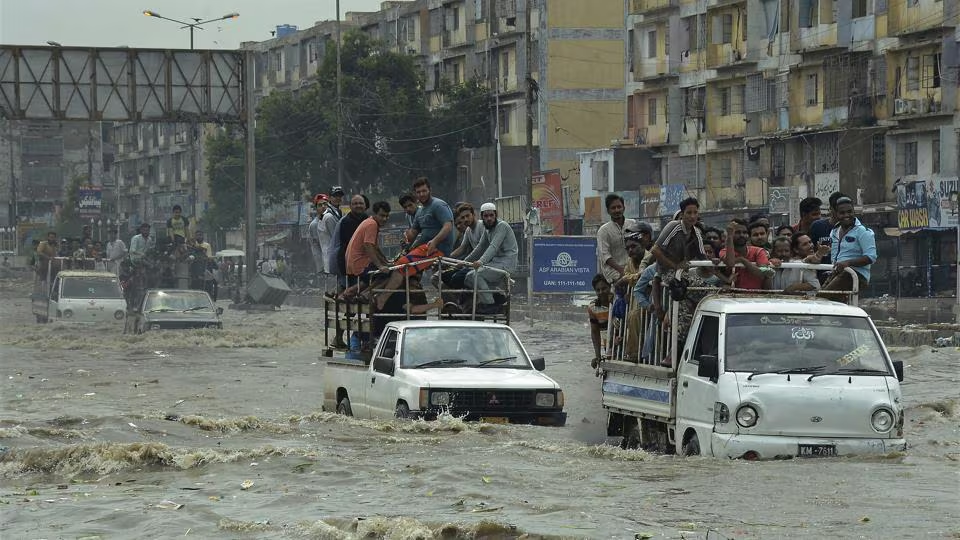
Karachi Rain Crisis: Sustainable Urban Flood Management Strategies
Introduction: Addressing Karachi’s Water Management Challenges
The Karachi rain crisis represents a critical urban environmental challenge that requires immediate attention and sustainable solutions. Currently, Pakistan’s largest metropolitan area faces severe flooding during monsoon seasons, affecting millions of residents and disrupting economic activities. This comprehensive analysis examines practical strategies and innovative approaches to manage the Karachi rain crisis effectively. Furthermore, we explore how integrated planning and community engagement can transform urban water management in this densely populated city.
Current Infrastructure Assessment and Gaps
Karachi’s drainage systems face significant challenges due to rapid urbanization and population growth. According to recent urban development reports, the city’s stormwater management infrastructure covers only 35% of the metropolitan area. Additionally, maintenance issues and blockages further reduce system efficiency during heavy rainfall. The Karachi Development Authority has identified several critical areas requiring immediate intervention to prevent future flooding incidents.
Integrated Urban Planning Approaches
Comprehensive Drainage System Modernization
Firstly, upgrading existing drainage infrastructure remains crucial for addressing water management challenges. Modern engineering solutions, including expanded canal networks and automated monitoring systems, can significantly improve water discharge capacity. Moreover, regular maintenance schedules and community cleaning initiatives help maintain optimal system performance throughout the year.
Smart Urban Development Policies
Secondly, implementing water-sensitive urban design principles can dramatically reduce flooding risks. For instance, zoning regulations that preserve natural drainage paths and require permeable surfaces in new constructions help manage runoff effectively. Similarly, green building codes that incorporate rainwater harvesting systems contribute to sustainable water management practices.
Community Engagement and Public Awareness
Neighborhood Action Programs
Local communities play a vital role in flood prevention through various initiatives. Community-led drainage cleaning campaigns and neighborhood watch programs help identify and address blockages promptly. Additionally, resident education programs about waste management practices reduce drainage system clogging during monsoon seasons.
Public-Private Partnerships
Collaborative efforts between government agencies and private organizations enhance resource allocation and implementation efficiency. For example, corporate social responsibility programs focusing on infrastructure development and emergency response training strengthen overall community resilience against flooding events.
Technological Innovations and Digital Solutions
Advanced Monitoring Systems
Modern technology offers innovative solutions for urban water management. Automated sensor networks throughout drainage channels provide real-time water level data and early warning capabilities. Furthermore, drone-based infrastructure inspections help identify maintenance needs and potential blockage points before they cause significant problems.
Digital Emergency Response Platforms
Integrated communication systems streamline coordination during flooding emergencies. Mobile applications that provide real-time weather updates and evacuation routes enhance public safety. Similarly, centralized emergency response coordination platforms improve resource allocation and rescue operation efficiency.
Environmental Conservation Measures
Green Infrastructure Development
Natural solutions complement traditional engineering approaches in flood management. Urban green spaces, including parks and rooftop gardens, absorb excess rainwater and reduce runoff volume. Additionally, restored natural watersheds and preserved mangrove forests along coastal areas provide natural flood protection barriers.
Climate Adaptation Strategies
Long-term planning incorporates climate resilience into urban development. Elevated infrastructure designs and flood-resistant building materials minimize damage during extreme weather events. Consequently, comprehensive climate adaptation frameworks ensure sustainable urban development despite changing environmental conditions.
Economic Considerations and Funding Mechanisms
Cost-Benefit Analysis of Prevention Measures
Investing in flood prevention proves more economical than post-disaster recovery. Studies indicate that every rupee spent on preventive infrastructure saves approximately five rupees in potential disaster recovery costs. Therefore, strategic investment in drainage systems and water management infrastructure offers significant economic advantages.
Sustainable Funding Models
Diverse financing mechanisms support infrastructure development projects. International development loans, public-private partnerships, and municipal bonds provide necessary funding for large-scale projects. Meanwhile, community contribution programs and local taxation schemes ensure ongoing maintenance funding for water management systems.
Implementation Framework and Timeline
Short-term Priority Actions
Immediate measures focus on emergency preparedness and rapid response capabilities. Pre-monsoon drainage cleaning, emergency shelter preparation, and public awareness campaigns form the foundation of initial response strategies. Subsequently, these measures provide immediate relief while longer-term solutions undergo development.
Medium-term Development Projects
Infrastructure upgrades and system improvements require coordinated implementation over 2-3 years. Drainage network expansion, pumping station modernization, and waste management system enhancements constitute primary focus areas during this phase. Additionally, policy reforms and institutional capacity building support sustainable implementation.
Long-term Strategic Vision
Comprehensive urban transformation involves integrated planning over 5-10 years. Master planning incorporating climate-resilient design principles and sustainable development goals guides long-term progress. Ultimately, this visionary approach ensures Karachi’s transformation into a flood-resistant metropolitan area.
Conclusion: Path Toward Sustainable Urban Resilience
The Karachi rain crisis demands comprehensive solutions combining infrastructure development, policy reform, and community engagement. Through integrated planning and sustained implementation, the city can effectively manage monsoon challenges and ensure resident safety. Moreover, technological innovation and environmental conservation measures provide sustainable pathways toward urban resilience.
Ultimately, successful water management requires ongoing commitment from all stakeholders, including government agencies, private organizations, and local communities. By working together and implementing the strategies outlined above, Karachi can transform its water management systems and create a safer, more sustainable urban environment for current and future generations.
| Facebook Page | X.com Page |
| Click Here | Click Here |




